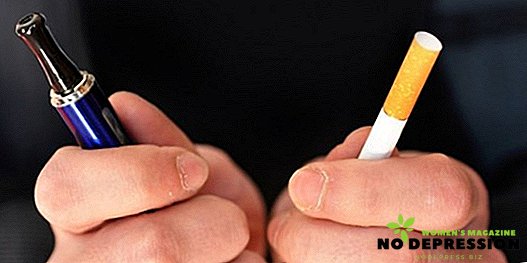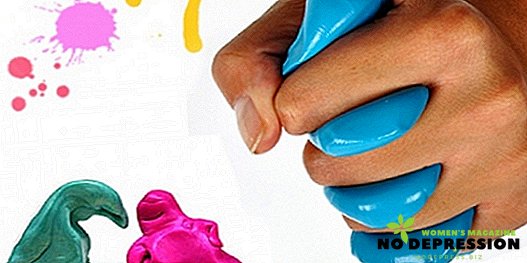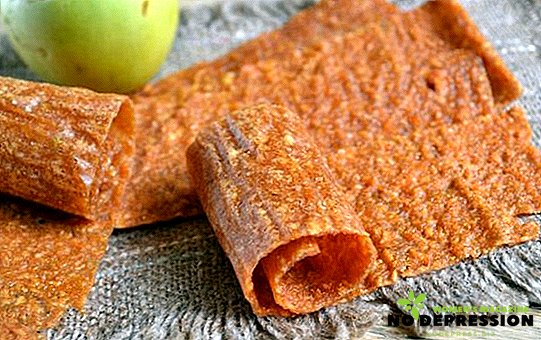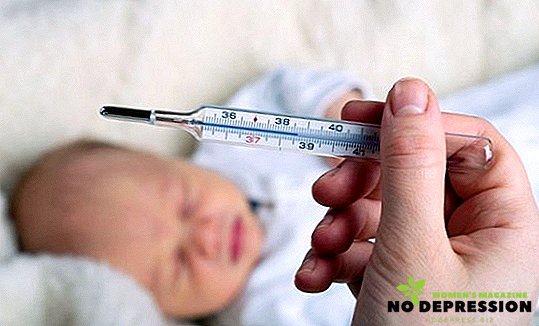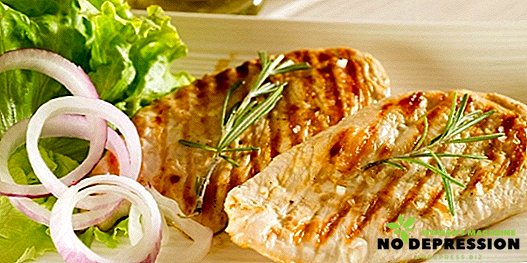Pelargonium is a plant of the Geranium family, it is widely known as geranium. Originally from South Africa, where it lives in dry and windy regions.
Geranium is a grassy, semi-shrub or shrub plant. Due to its unpretentiousness and abundant flowering, it is very popular for indoor, balcony and garden cultivation.
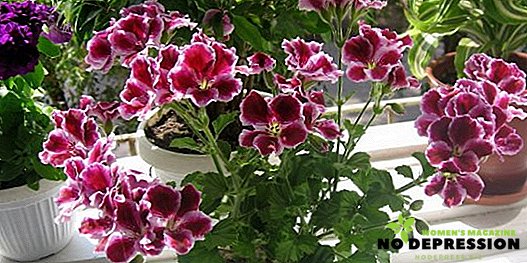
Not only Soviet grandmothers, but also people in Europe, love the Pelargonium, actively decorating it with their balconies and loggias. It should be noted here that when a plant is grown in spacious tubs, pots and in "free" soil in the garden, it blooms moderately.
The greatest abundance of inflorescences of different colors can be observed in geraniums growing in cramped pots (naturally, moderately cramped).
Varieties of Pelargonium Varieties
In total, there are about 250 species in the genus Pelargonium, on the basis of which, in turn, many varieties are bred.
The most popular and common types are:
- Royal (it is large-flowered) - differs in large flowers with zonal coloring of petals. The middle is always darker and velvety, and the edges are very light;
- Ivy (or thyroid) pelargonium is distinguished by glossy leaves and velvet flower petals. Its stems usually grow up to 1 meter in length, which made the thyroid look popular for decorating balconies and loggias;
- Zonal - a characteristic feature of this species is the zonal staining of the leaves, the edges are always slightly lighter than the center. This is one of the most common species and on its basis many varieties are bred;
- The angel is distinguished by its fragrant leaves and flowers, similar to Pansies. The only drawback is the gradual reduction of flowers by autumn;
- Pelargonium fragrant grows quite large and therefore is often used for landscaping gardens. True, you should be careful, because she has very fragile stems that can break in strong winds.

Home care for beginners
By itself, care for pelargonium is simple, and it is perfect for novice gardeners or those who do not like to tinker with plants. The main thing is to follow a few simple rules and monitor the state of the geranium. If something goes wrong, for example, you forget to water the plant, everything will be visible in appearance.
Location and lighting
Pelargonium - light-loving plant withstands direct sunlight. The best location for its location would be the south, east or west side. Although in hot weather, pelargonium can "throw off" almost all the leaves and only flowers will remain.
Therefore, in a region with a hot climate and in the midst of summer, it is better to remove the plant from the south. You can do it calmly, because displacement does not affect geranium.

In general, the lighting should be abundant, ideally, the daylight hours are 16 hours. With a lack of light, the stems begin to stretch and the plant loses its attractive appearance. In the summer, geranium is better to make on the balcony or in the garden, so that it is directly under the sun.
When choosing a place and lighting, it is necessary to take into account the individual characteristics of the species, so Pelargonium fragrant prefers shaded places. And for the royal variety, direct sunlight is undesirable, so the location on the south side should be avoided.
Air temperature and humidity
Temperature conditions, for pelargonium, moderate is preferable. She does not like cold or big heat.
Optimum performance:
- in the summer - +20 - +22 degrees;
- in winter - +16 degrees;
- Some species can withstand short cooling periods (for example, pelargonium zonal will withstand a temperature drop of up to +1).
As for humidity, the usual indicators will do. Additional moistening (spraying) does not require pelargonium. Extreme case, it is very dry air during a strong heat. But the highly humid air can lead to rotting of the stems and roots, as well as the appearance of infections.
Also watch for air circulation. She must be constantly. In stale air, the plant will start to ache. This is especially important during wintering.

Watering and feeding
Geranium does not need frequent watering. Need to navigate as the drying of the soil. But there are a few rules, in the summer the soil should always remain wet (but not wet).
The best way to check whether it is time to water pelargonium or not is to check the soil by touch. The top layer should be dried, but under it (about 1 cm deep), the ground should already be wet.
After watering, be sure to wait until the water flows into the pan. After 10 minutes, drain the fluid and wait until it is completely drained. It is best to carry out watering in the pan, rather than pouring water directly under the roots. The most experienced gardeners and flower growers know this. But even if you do everything in the "usual" way, that's okay, the main thing then is to remove the excess liquid. This rule applies to both winter and summer irrigation.

Feeding is still easier. It is necessary to make it in the flowering period - this is from about early spring to late autumn. Once a fortnight a solution is added for flowering plants. You can choose any fertilizer is not rich in nitrogen. See the dosage in the instructions for each specific fertilizer.
Transfer
Pelargonium practically does not need transplantation, the only exception is transplanting rooted cuttings, but more on that later. Pelargonium grows for about three years, therefore, usually, only the topsoil is replaced with a new one (the mixture is composed in the same way as the soil in which the plant is already growing).
The soil for geranium is a mixture of leaf and sod land mixed with sand and peat. The volume of each component is the same, i.e. observed ratio of 1: 1: 1: 1.
Pruning
It is necessary to cut the plant annually, at the very beginning of the flowering period, i.e. in early spring. Usually, all the upper shoots are harvested (then they can be used for breeding). Such pruning allows to give exactly lateral growth of pelargonium and abundant flowering.

Bloom
Color geranium, as already mentioned, from early spring until late autumn. Blooming form - several umbrella inflorescences. They can be completely different colors (depending on the type and variety). The flowers also differ in size (in some species they are large, like the royal one, others smaller).
Home reproduction
Pelargonium home can multiply in two ways: by seed and by cuttings. The first, when growing at home, is not very common, as it is rather difficult.
For reproduction by seeds, in the spring the container is prepared and filled with light soil. In the ground sow the seeds and regularly watered. The first time temperature should be 20-22 degrees.
In the middle of summer, young plants are transplanted into a mixture of leaf and sod land with phosphorus and sand. In this respect, the components are taken in equal quantities.
For vegetative propagation, a small pot is taken (about 19 cm in diameter). To begin with, the drainage is placed on the bottom, and then a mixture of peat and sand is poured.
Cuttings should have 3-5 pairs of leaves, but not less than 2. They are clipped either by node or slightly lower. In cut cuttings remove the bottom pair of leaves leaving a naked "column".

After preparing the cuttings, you need to make holes in the ground closer to the edge of the pot. After that, place the cuttings there so that all the leaves are above the soil and lightly tamp the soil.
Now you need to wait a few days until the roots "grapple" with the soil. Only after that you can water the young shoots. By the middle of summer, transplant pelargonium into larger pots.
The soil mixture is prepared from leaf and sod land, sand and peat, all in equal proportions.
Diseases and pests
Pelargonium, although a hardy plant, can also sometimes hurt, often because of improper care.
Geranium Diseases:
- gray rot;
- rust;
- verticillary wilting;
- rotting of the stem;
- other pathogenic fungi, due to which different spots appear on the leaves and petioles.
Gray rot
If the plant began to develop gray rot, then on its leaves, shoots, main stems and even flower petals begins to appear gray patina. This is due to low temperatures, air humidity and the lack of ventilation, and abundant watering.

Prevention:
- observe the temperature conditions necessary for pelargonium in winter;
- air the room regularly;
- do not place plants close to each other;
- remove dry or diseased leaves;
- Do not water more often every 10 days.
Rust
Rust can be detected by concentric brown circles on the inside of the sheet. From the outer side of the plate only yellow circles will be visible.
Causes: dampness, insufficient ventilation.
Treatment: you need to cut off all the affected leaves and process the plant with a solution of benat at the rate of 1 g per 1 l.
Verticillary wilting
This disease is caused by a fungus that infects the conducting system of pelargonium. In geranium, the leaves gradually wither and turn yellow. There is no cure.

Rotting stalk
At the base of the stem, a black spot begins to appear and grow. Gradually, the stem completely rotted at the base. Treatment is absent. The maximum that can be done is to cut the stalk from the top and prevent the disease itself. Reasons: too abundant watering.
Pests
Insects that affect pelargonium:
- The whitefly is a white very small butterfly. Instead, there may still be white small larvae on the plant;
- Mites live on the underside of the leaf and their presence can be detected by a characteristic thin web on the plant. With the defeat of the mite, the leaves gradually become marble due to the deprivation of nutrients;
- Mealybug - found by characteristic clumps, like cotton, in the axils of leaves and stems.

During the acquisition, carefully inspect the plant for the presence of whitefly or mealybug. If you suddenly find signs of pests or themselves - refuse to buy.
Treatment: reduce watering, thoroughly air the room and additional fertilizer can be applied.
Possible problems and solutions
In addition to infecting plants with various diseases and pests, less terrible problems are possible. Usually they occur due to improper care and are treated by eliminating the cause.
Problems and solution:
- If the pelargonium leaves begin to turn red, then the temperature is too low and you need to set the desired temperature;
- There are few flowers, but a large number of leaves - you apply a lot of fertilizer, reduce the amount, and better stop feeding;
- Lower leaves turn yellow - lack of moisture and lack of ventilation.
The main thing in the care of this amazing plant is to follow all the simple rules or correct the situation in time. And the rest of the plant does not cause inconvenience and pleases the eye with its flowering.
A few tips on the formation of a magnificent pelargonium bush are in the following video.


